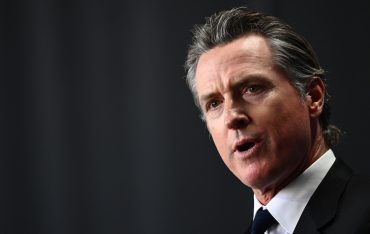
- Clean Energy
- Climate Policy
- Green Tech
U.S. Climate Policy Rollback Risks $600B in Clean Energy Cuts
6 minute read

New climate policy reversal threatens renewable energy investments and jobs while increasing household electricity costs nationwide
Key Takeaways
- $600 billion in clean energy investments at risk following the July 4th signing of the “One Big Beautiful Bill Act” that reverses core provisions of the Inflation Reduction Act
- Up to 760,000 job losses projected by 2030 with potential GDP loss reaching $1.1 trillion between 2026 and 2034 as clean energy tax credits face elimination
- Industrial energy costs rise $7-11 billion by 2035 while household energy bills increase $78-192 on average as clean power capacity buildout drops 53-59%
Introduction
The U.S. energy sector faces unprecedented disruption following the enactment of sweeping legislation that dismantles the nation’s largest clean energy investment program. The “One Big Beautiful Bill Act” signed into law this month reverses core provisions of the Inflation Reduction Act, threatening over $600 billion in private sector commitments and fundamentally altering the landscape for renewable energy development.
This policy reversal represents more than regulatory adjustment. It signals a complete strategic pivot that places hundreds of thousands of jobs at risk while potentially ceding American leadership in the global clean energy transition to international competitors.
Key Developments
The rollback targets the Inflation Reduction Act’s foundation of tax credits and rebates that drove unprecedented private investment in domestic clean energy manufacturing and deployment. The original legislation provided crucial incentives for projects in low-income communities and established pathways for 80% renewable energy capacity by 2030.
An executive order signed July 7th compounds the uncertainty by directing the Treasury Department and IRS to issue stricter guidance on safe harbor provisions by August 18th. This accelerated timeline forces developers to expedite procurement processes or risk losing access to expiring credits entirely.
The new framework imposes foreign ownership restrictions and eliminates manufacturing credits that incentivized domestic supply chain development. These combined measures effectively reverse policies designed to reduce U.S. reliance on overseas suppliers, particularly from China.
Market Impact
Energy markets respond to the regulatory shift with immediate pricing pressure. The American Clean Power Association projects electricity prices will rise at least 10%, creating additional strain for the third of Americans already struggling with utility bills according to recent Smart Energy Consumer Collaborative surveys.
Clean energy project financing faces immediate disruption as developers rush to meet new qualification deadlines. Companies targeting technology-neutral tax credits must demonstrate construction commencement by July 4, 2026, and achieve service placement by end of 2027 under stricter documentation requirements.
The clean power sector anticipates reduced capacity additions of 53-59% from 2025-2035, while electric vehicle tax credit eliminations threaten domestic EV adoption rates and battery manufacturing investments.
Strategic Insights
Technology companies dependent on reliable, cost-effective power for data centers and AI operations face compounding challenges. Power demand from AI applications alone could add 10-45 GW to the U.S. grid by 2030, yet the policy shift undermines the infrastructure investments needed to meet this demand.
Corporate clean energy procurement strategies require immediate reassessment. While U.S. companies announced 28 GW of renewable power purchase agreements last year, regulatory uncertainty now threatens project viability and forces reconsideration of international alternatives.
Supply chain localization efforts face particular pressure as domestic manufacturing incentives disappear. Companies must evaluate whether to maintain U.S. production facilities without federal support or return to offshore suppliers despite geopolitical risks.
Expert Opinions and Data
Industry analysts characterize the rollback as a fundamental threat to sector growth. Segue Sustainable Infrastructure estimates $211 billion in losses if 122 GW of projects face cancellation due to policy changes.
The Penn Wharton Budget Model analysis indicates the legislation could reduce U.S. GDP by 0.3% while increasing primary deficits by $3.2 trillion over the next decade. Energy Innovation projects job losses could reach 2 million over ten years as manufacturing and deployment activities contract.
According to Utility Dive, regulatory uncertainty creates additional barriers to foreign direct investment, potentially accelerating the shift of clean energy capital to more stable international markets.
Development companies emphasize the critical importance of meeting revised deadlines while navigating new compliance requirements. The Treasury Department faces pressure to provide clear guidance on material assistance restrictions and foreign entity provisions that could disqualify projects with international supply chain components.
Conclusion
The energy sector confronts a fundamental restructuring that extends far beyond policy adjustment to reshape investment flows, employment patterns, and technological development priorities. Companies maintaining operations in the space must balance immediate compliance requirements with longer-term strategic positioning as federal support mechanisms disappear.
The legislation creates winners and losers across energy markets while testing the resilience of clean technology business models developed under different regulatory assumptions. The sector’s response to these challenges will determine whether recent momentum toward energy transition continues through private investment or stalls pending future policy changes.








